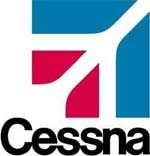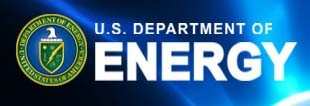Aviation Industry Is First To Focus Initiative On Greener
Aviation Design
by ANN Correspondent Maxine Scheer
There's a new aviation education initiative about to be launched
by the Department of Energy (DOE). It is called the "Real World
Design Challenge" and its launch date is October 1, 2008.

Attention to this initiative was raised during AirVenture 2008
when Cessna CEO Jack Pelton and Lyn Freeman of Build A Plane
announced they are working with DOE in developing the 2009 Pilot
Program for this new high-school design competition. This
real-world challenge, developed by Cessna in collaboration with
educators, is "to create greener aircraft designs using
computer-aided design," said Pelton.
Participation in the challenge offers students and teachers the
opportunity to work alongside engineers and scientists at all of
DOE's National Labs with support from industry mentors, and gain
real-world experience by using the latest CAD/CAM design software,
online project collaboration systems, and fluid dynamic modeling
software to work on green aircraft design.
 "Real" is the operative
word in this challenge as teachers will be trained in real design
software, student teams will be built around real industry roles
such as project manager, scientist, engineer, and community
relations & marketing, and teams will be given a real problem
to solve.
"Real" is the operative
word in this challenge as teachers will be trained in real design
software, student teams will be built around real industry roles
such as project manager, scientist, engineer, and community
relations & marketing, and teams will be given a real problem
to solve.
By the time all is said and done, each teacher will receive
nearly $1 million in software and lifetime upgrades, all donated by
industry partners including Parametric Technology Corporation (PTC)
and Flomerics, Inc.
For the first year, the DOE challenge will limit participation
to 10 states. Support from the states' Governors is mandatory and
involves outreach, websites for teachers to enroll, and state
coordinators. The DOE announcement came out in mid-July; via
announcements from the Lieutenant Governor's Offices, Vermont,
Kansas, and Oklahoma were the first three states to sign up.
Oklahoma, already promotes engineering through its 29 Technical
Education Centers, has trained teachers for the DOE challenge at
eight schools thus far and anticipates another eight to 10 to be
trained before the competition starts in October. They heard about
the challenge through Roger Tadajewski of the Business Education
Partnership Group (BEPG). Roger comes from having successfully
implemented business-education partnerships in the Automotive
industry and is now focused on Aerospace.
The first competition will be between design teams in each
state, with awards anticipated in January 2009. Winning teams from
each state will come to Washington around March 2009 for another
competition, culminating in a forum led by leading engineers and
scientists and an award event.
ANN talked with Sue Ellen Wallbridge, DOE Program Manager, about
how all this came about. "DOE is not just a bunch of Ph.D.s", says
Wallbridge. "Engineering is quite valuable to DOE. We have 18 labs
across the US (which includes Oak Ridge National Laboratory), and
much of what we use in our research cannot be bought off the shelf;
it needs to be engineered by multi-disciplined teams."
DOE staffs an office called "Workforce Development for Teachers
and Scientists," or WDTS and sponsors over 600 undergraduate
research scholarships, summer academies at DOE National Labs
creating "Teacher Scientists" and sponsors a science competition
for middle and high school students called the "DOE Science
Bowl."
"There are lots of different engineering contests," said
Wallbridge, "but DOE wants to get into the brass tacks where
students can contribute to something of concern to them and see
some change come from their effort."
When asked about why aviation was chosen as the pilot, she
responded, "quite honestly, aviation was first to the plate. We
also knew that aviation would be a subject that would really excite
the kids."
Parametric Technology Corporation (PTC), a 55,000+ person global
software company, was the first to approach DOE with the idea for
an aviation design challenge. A major industry focus of PTC's
design and modeling software is Aerospace and Defense. ANN spoke
with Dr. Ralph Coppola, Director of Worldwide Education, to learn
more about PTC's role.
 "PTC shares the
concerns its clients have with the decline in US K-12 STEM
(Science, Technology, Engineering, and Mathematics) education and
the very real workforce crisis that threatens US Aerospace
competitiveness and national security," said Coppola.
"PTC shares the
concerns its clients have with the decline in US K-12 STEM
(Science, Technology, Engineering, and Mathematics) education and
the very real workforce crisis that threatens US Aerospace
competitiveness and national security," said Coppola.
Over the past year, PTC talked regularly with DOE about the
engineering education gap in their programs and at the same time
was talking with Build A Plane about the need for an engineering
curriculum to go along with the donation of aircraft. "Build A
Plane and FAA were key players in developing and promoting an
aviation-themed program to DOE," said Coppola.
PTC was involved in a similar initiative in the UK that resulted
in 80% participation by UK schools and teams which secured
financial compensation from having contributed to the design of a
tool used to maintain the Rolls Royce Pegasus Engine.
Dr. Coppola also described the results of a recent focus group
with Aerospace firms in New England. "Not surprisingly, they want
engineers with superb academic credentials and 7-10 years of real
world experience. The engineering pipeline shortage is now,
especially amongst US citizens. So we talked about the concept of
US students getting real-world experience during their K-12
education, and they were very supportive."
In addition to Cessna, PTC and Flomerics, Boeing, FAA and others
have also joined the DOE/PTC led team to offer technical advice and
mentoring.
A quote from the great philosopher Sophocles was used in the
WDTS Strategic Plan... and seems quite appropriate to aviation:
"One must learn by doing the thing; for though you think you know
it, you have no certainty until you try."
 ANN's Daily Aero-Linx (05.06.25)
ANN's Daily Aero-Linx (05.06.25) ANN's Daily Aero-Term (05.06.25): Ultrahigh Frequency (UHF)
ANN's Daily Aero-Term (05.06.25): Ultrahigh Frequency (UHF) ANN FAQ: Q&A 101
ANN FAQ: Q&A 101 Classic Aero-TV: Virtual Reality Painting--PPG Leverages Technology for Training
Classic Aero-TV: Virtual Reality Painting--PPG Leverages Technology for Training Airborne 05.02.25: Joby Crewed Milestone, Diamond Club, Canadian Pilot Insurance
Airborne 05.02.25: Joby Crewed Milestone, Diamond Club, Canadian Pilot Insurance





